
Plant
11:52, 31-Mar-2019
Carnivorous plants: The 'sticky lotus' that digests insects
Updated
16:41, 29-Apr-2019
By Xu Chenlu
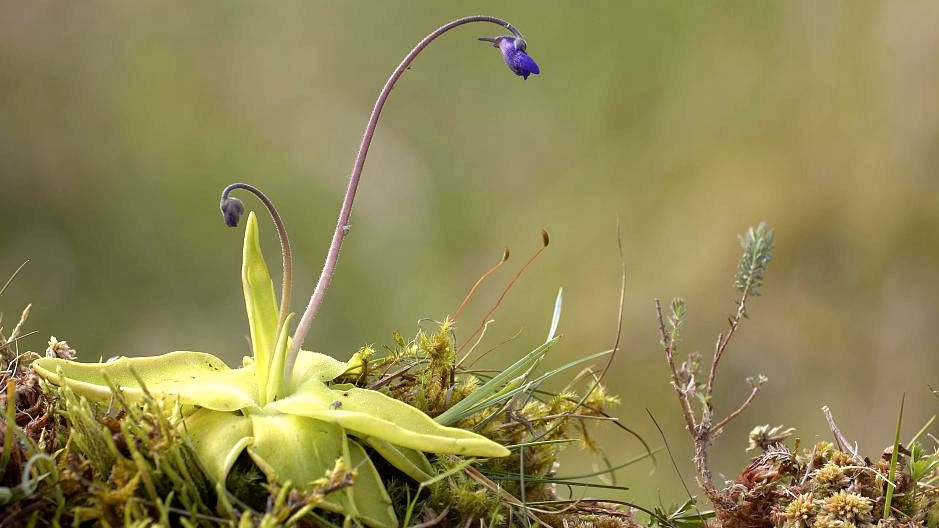
Butterworts, a genus of plants that are usually mixed up with succulents by people because of their lotus-like shape and fleshy leaves, are among the big carnivorous plant family.
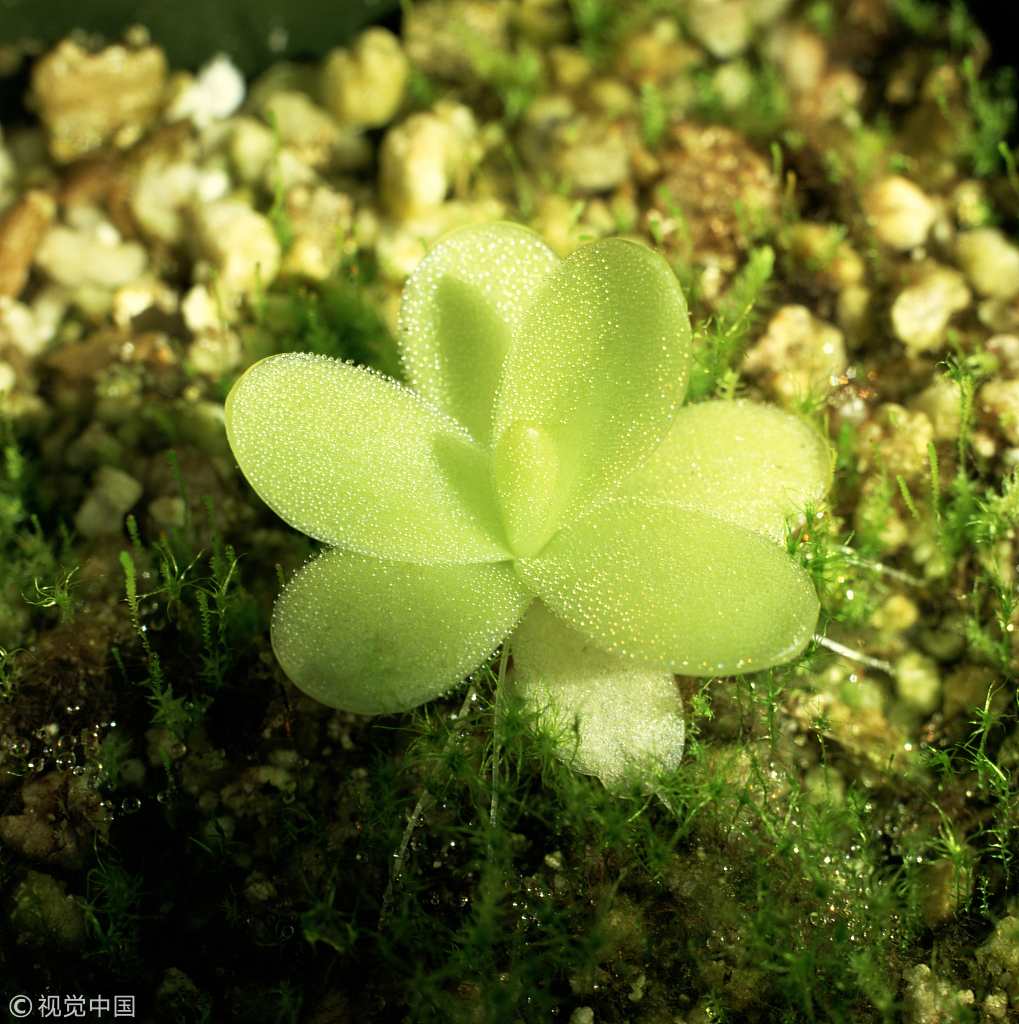
Butterwort seedling /VCG Photo
Butterwort seedling /VCG Photo
On the broad leaves of a butterwort lies a layer of glandular hairs. The mucilage secreted by these hairs creates a greasy touch. The name "butterwort" reflects such a characteristic.

Buttery or waxy leaves trap insects, the edges curl entombing insects, then they are digested. /VCG Photo
Buttery or waxy leaves trap insects, the edges curl entombing insects, then they are digested. /VCG Photo
When preying, a butterwort's glands will produce a special type of gas to lure insects. Once the insects are trapped by the mucilage, their struggle will stimulate the butterwort's glands to secrete a digestive enzyme, and digest the insects little by little, until their bodily remains eventually disappear from the surface of the leaves.
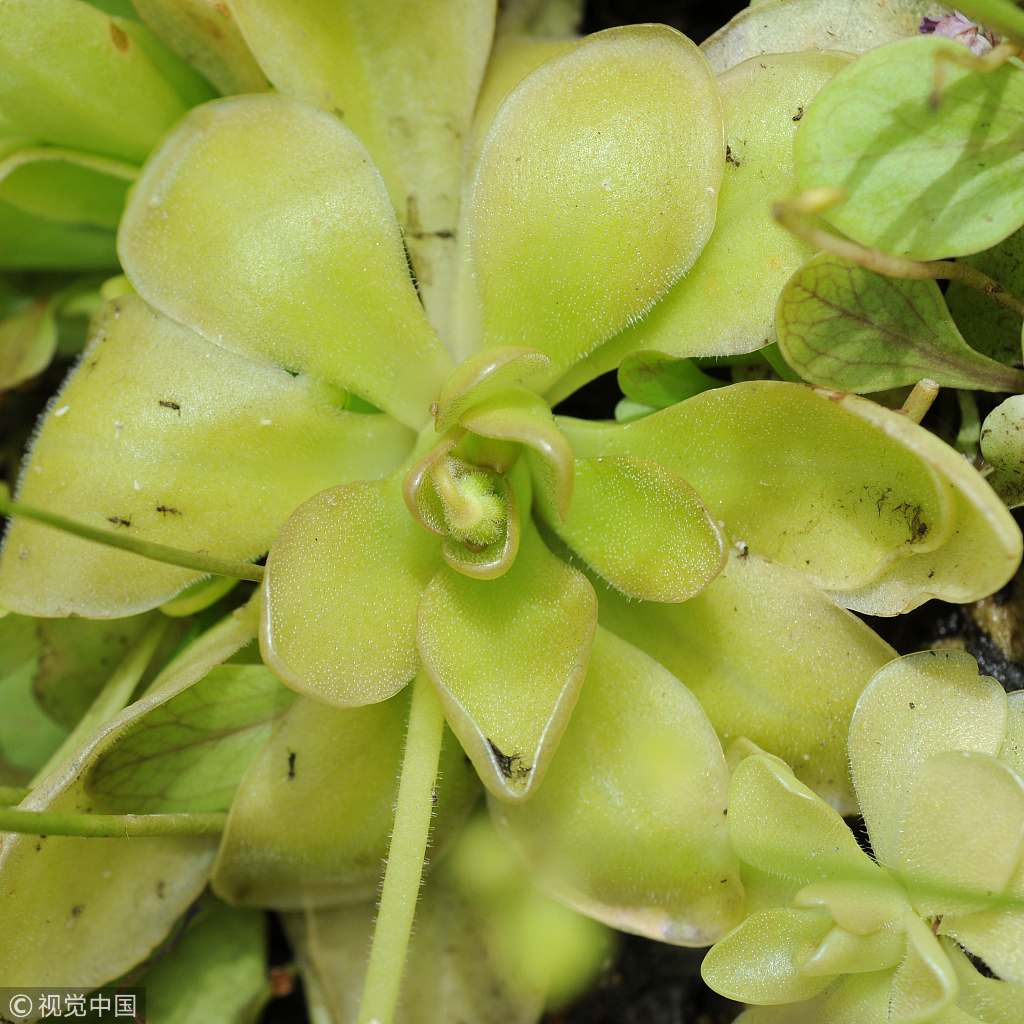
Butterworts with dead insects on leaves /VCG Photo
Butterworts with dead insects on leaves /VCG Photo
Apart from amazing leaves, butterworts also have beautiful flowers. During flowering seasons, a stalk with a flower bulb reaches out from the middle of a butterwort, and spreads into a vibrant flower in days. These colorful flowers are highly cherished by gardeners.
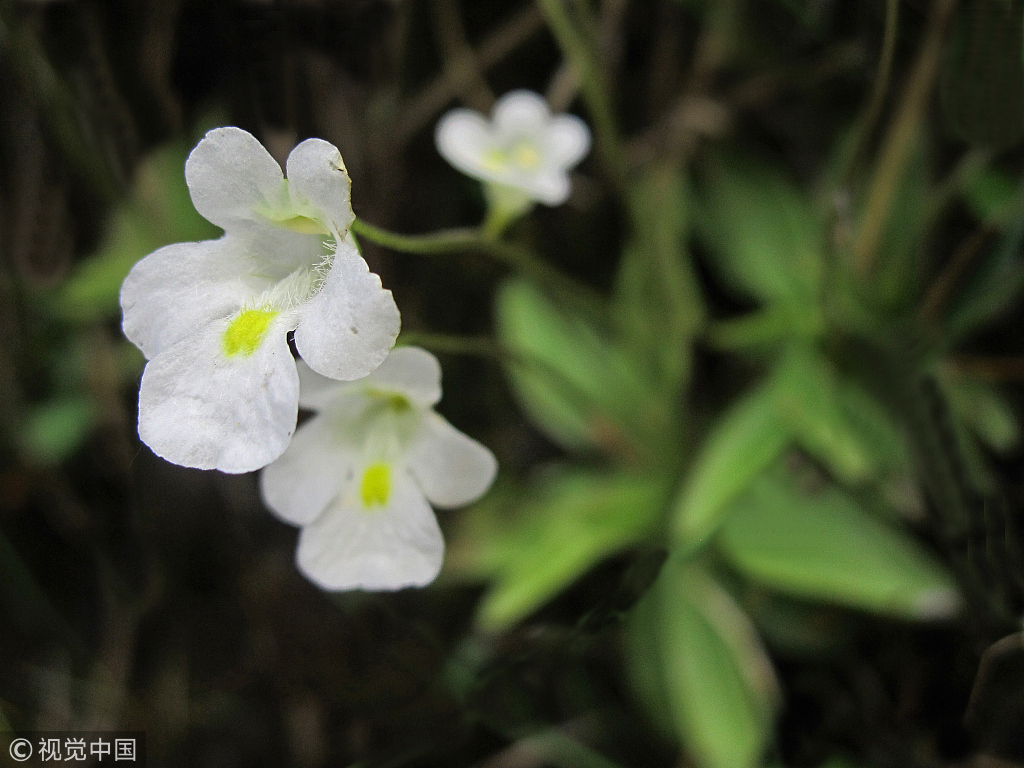
The flower of Alpine Butterwort /VCG Photo
The flower of Alpine Butterwort /VCG Photo
Just like most carnivorous plants, butterworts live in environments with poor soil. Its undeveloped root system is merely used to absorb water from soil, and most of its nutrition come from the insects.
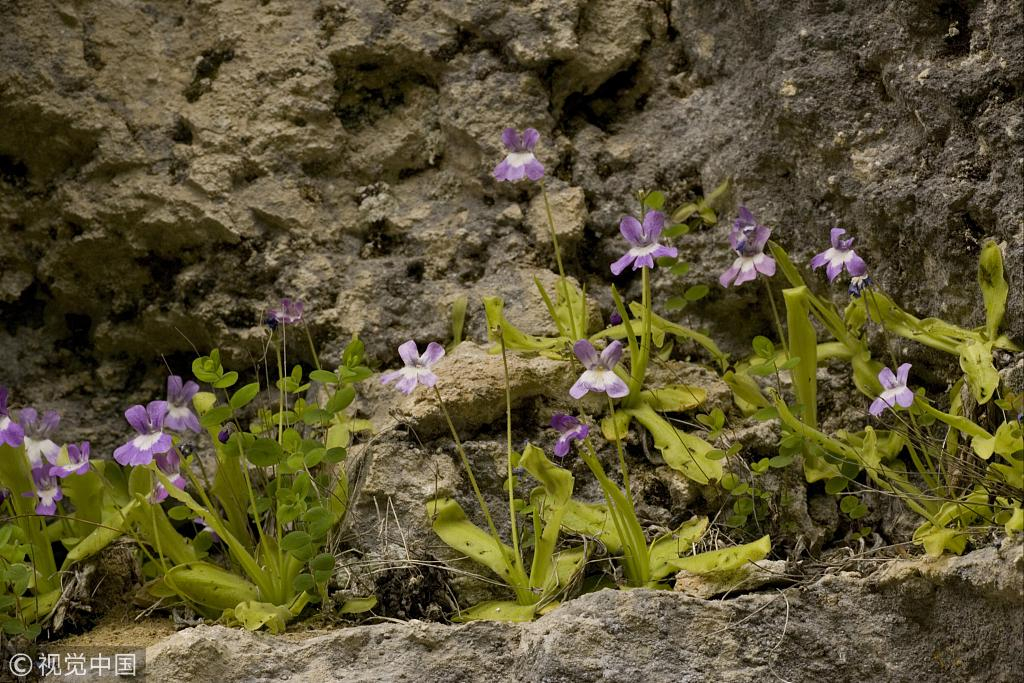
Long-leaved Butterwort (Pinguicula longifolia), flowering, growing on rock ledge, Pyrenees, Spain, Europe /VCG Photo
Long-leaved Butterwort (Pinguicula longifolia), flowering, growing on rock ledge, Pyrenees, Spain, Europe /VCG Photo
Butterworts are widely distributed throughout the northern hemisphere. In China, they can be found in southwest areas and parts of Tibet.
About Carnivorous Plant series
At this year's International Horticultural Exposition, there is a special zone in the Plant Pavilion for various carnivorous plants. These plants prey on insects or small animals for extra nutrition that they cannot get simply from the soil, water, and sunlight. In this series, we are going to present to you the most typical carnivorous plants.
(Cover images via VCG)
(If you want to contribute and have specific expertise, please contact us at nature@cgtn.com)

SITEMAP
Copyright © 2018 CGTN. Beijing ICP prepared NO.16065310-3
Copyright © 2018 CGTN. Beijing ICP prepared NO.16065310-3